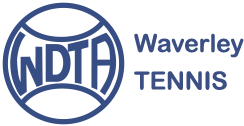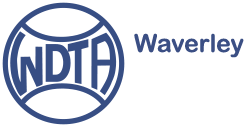All players, Venue Supervisors and parents should be aware of the following basic principles when playing a match without a Chair Umpire.
Players who do not fairly follow these procedures could be subject to penalties under the Unsportsmanlike Conduct provision of the Code of Behaviour and/or subject to the Hindrance Rule (ITF Rules of Tennis).
Any questions on these procedures should be referred to the Tournament Referee, their Assistant, Junior Convenor, Venue Supervisor or Court Supervisor.
- Each player is primarily responsible for line calls on their side of the net. However, a Court Supervisor or Referee is permitted to change an incorrect line call, either whilst located within the court (appointed as adjudicator/chair umpire) or from outside the court. The following procedures apply when a call is changed:
- Official located outside the court:
On the first occasion, the official should enter the court and inform the player that the incorrect line call caused an unintentional hindrance to the opponent, and the point must be replayed. If however the opponents shot was a “point-ending shot”, the point will be awarded to the opponent. The official must inform the player that any further incorrect line calls will be considered a “deliberate hindrance” for which they will lose the point. The player should also be cautioned that they may be subject to penalties under the Unsportsmanlike Conduct provision of the Code of Behaviour for having two line calls overturned in the same match. - On Court as an Adjudicator:
If an official is required to stand on-court to adjudicate the match, the official should advise the players to continue to perform all duties assigned to players by these procedures. The role of the adjudicator is purely to correct any clearly incorrect line calls made by either player, in which case the offending player will lose the point. - On Court as a Chair Umpire:
If an official is required to act as a Chair Umpire for the remainder of a match, the official must, where possible, take position in a chair umpires chair. The chair umpire must assume all the normal duties and procedures for chair umpires, i.e. making all line calls, determining lets, nets, not-ups and fouls shouts, and announcing the score after each point.
In addition, when a player makes a blatantly incorrect call, the player will lose the point, and a Code Violation for Unsportsmanlike Conduct may be given if the official determines that the player made the incorrect call on purpose.
- If in doubt, the player must give the benefit of any doubt to his/her opponent, in particular regarding line calls.
- If in the opinion of the Court Supervisor or Referee an incorrect line call is a deliberately blatant action, the offending player will automatically lose the point and may receive a code violation for Unsportsmanlike conduct.
- All “out” or “fault” calls should be made promptly after the ball has bounced and must be loud enough for the opponent to hear.
- If a player incorrectly calls a ball “out” and then realises that the ball was good, the point should be replayed, unless it was a point winning shot or unless that player made an incorrect “out” call earlier in the match. In these circumstances, the player who called “out” loses the point.
- A service “Let” may be called by either player/team.
- Foot faults may only be called by an official standing on court or by a chair umpire. Players may be requested to correct their foot faulting problem by a Referee or Court Supervisor, who will require the player to make an effort during the match to rectify the problem. The receiver may not call a foot fault against the server.
- The receiver must play to the reasonable pace of the server. Both players must ensure they restrict their warm-up time, and minimise time between points and at change of ends.
- To avoid controversy over the score, the server should announce the game score before starting a game and the point score prior to serving for each point, and must be loud enough for his/her opponent to hear.
- If players cannot agree on the score, they should calmly discuss the points/games that are disputed. All points or games which the players agree on stand and only those in dispute should be replayed i.e. two players cannot agree on whether the score is 40-30 or 30-40 and disagree only on who won the first point in the game. The game shall continue from 30-30, since both players agree that they have won two points each.
When the game score is in dispute the same principles applies i.e. two players cannot agree on 4-3 or 3- 4, and disagree only on who won the second game. The match shall continue from 3-3, since both players agree that they won three games each. The player who received in the last game that was played will serve in the next game.
Where there is a score dispute, a player must make a reasonable effort to remember the actual score, i.e. points/games played. - When a player has created an involuntary hindrance (ball falling out of pocket, hat falling off, etc.), the first time a “let” should be called and any similar hindrance thereafter will be ruled deliberate.
- Any hindrance caused by a player that is ruled deliberate by the relevant official will result in the loss of a point.
- Where a ball interrupts play, either by rolling/bouncing onto the court, and/or creating a visible interruption behind the court a let should be played. Either player can call a let in these circumstances provided they do so in a timely manner. Where this is between a 1st and 2nd serve, a second serve only should be played.
- In a situation where a ball is lying on the court at the commencement of the point (1st or 2nd serve) it will be deemed to be part of the court during the rally. Movement of this ball during the rally does not constitute hindrance.
- When ball persons are not available, all balls on your side of the net are your responsibility to pick up and return directly to the server.
- Players are entitled to request their opponent to remove the ball from the court prior to the commencement of the point.
- The receiver should not return the first service if it is an obvious fault - let it go by or ground it.
- Either player may call a “Let”, “Net”, “Not-Up” or “Foul Shot”, providing this occurs in a timely manner. When there is a dispute regarding these, an official should try to determine from the players what happened and make a decision as they deem appropriate which may include replying the point.
- Players should only leave the court for a toilet break, or any other reason, with the permission of Referee or Court Supervisor.
- If at the completion of a match, the players involved realise that the scoring format used was incorrect, the match result shall stand provided all players have left the court enclosure. If the mistake is realised before the players have left the enclosure, the correct scoring format should be used to finalise the match. If this is not possible (i.e. the match has progressed beyond the point where the correct scoring format can be implemented), then the score based on the incorrect format stands. (Refer to correcting errors in the Rules of Tennis).
- Where a Code Violation second offence / Point Penalty is determined by the Referee or Court Supervisor this may be applied at any time during the specific game where the offence occurs. If the point penalty cannot be issued during the specific game a code violation second offence will still be issued. It should be noted that any code violation second offence between games is deemed to be part of the following game.
- Screaming regularly and loudly, whether in relation to winning and/or losing a point is likely to cause interference to play on nearby courts and may be considered Unsportsmanlike Conduct.
- Constant or overt celebration, or celebration directed at an opponent may be considered intimidation, and therefore unsportsmanlike conduct.
- If a player is unhappy with his/her opponent’s actions or decisions, he/she should call the Referee or Court Supervisor immediately.
Additional procedures for matches played on clay courts
For matches played on clay courts, there are some additional procedures that all players should follow:
- A ball mark can only be checked on a point ending shot, or when play is stopped (a return is permitted, but then the player must immediately stop).
- Players are prohibited from checking the mark of the ball on their opponent’s side of the court, unless invited by their opponent to do so.
- If a player erases the mark, he/she is conceding the call.
- If there is a disagreement over a ball mark, the Referee or Court Supervisor can be called to make a final decision. However, where a player is consistently making incorrect calls resulting in numerous ball mark inspections, a Code Violation may be applied.
- If a player calls a ball “out”, he/she should, in normal circumstances, be able to show the correct mark.
- If a player incorrectly calls a ball “out” and then realises that the ball was good, the player who called “out” loses the point.
Etiquette
- Players are expected at all times to shake hands with their opponent(s) at the completion of a match.
- Do not enlist the aid of spectators, including parents, coaches in making line calls, or attempting to determine the score or other on-court matters.
- Wait until a point is over before walking behind a court where a match is in progress.
- To retrieve a ball from another court or to return a ball to another court, wait until the players have completed a point.
- Do not stall, sulk, complain or practice gamesmanship.
- In doubles, when returning service, the partner of the receiver should generally call the service line for him/her. The receiver should generally call the centre and side service lines. The call needs to be loud enough to stop their opponents/partner playing.


